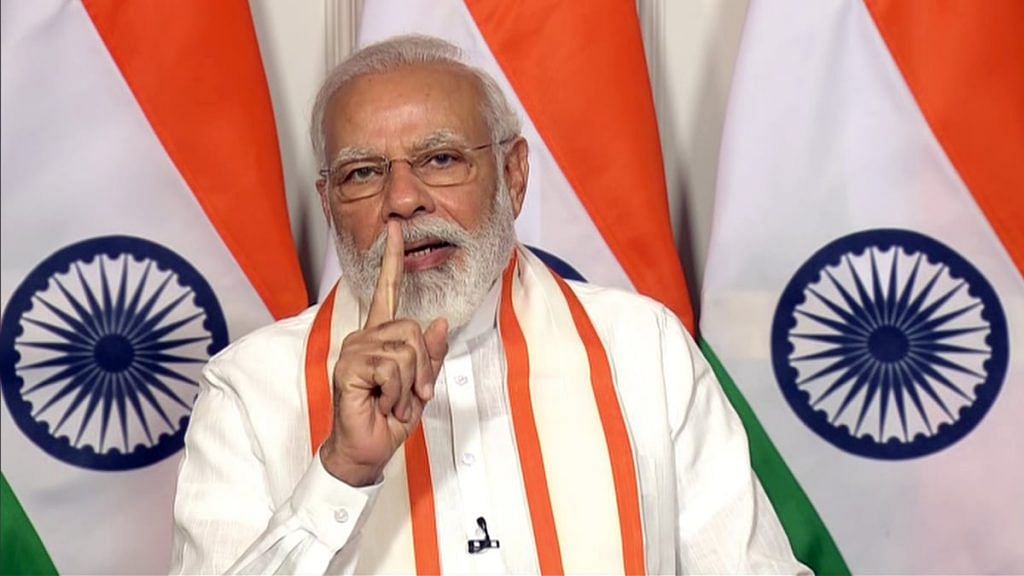New Delhi: The Modi government is working to improve India’s ranking on 29 global indices, and it wants the message to reach everyone loud and clear.
According to government officials, the Modi administration is building a massive publicity campaign around its planned perception-overhaul exercise, which is not just aimed at working on India’s performance but also pointing out the “problems” that plague certain ranking frameworks.
This large-scale media blitzkrieg will involve multimedia campaigns and microsites (sites within websites) created by different ministries and states, and aim to “shape India’s perception for the domestic and global audience and publicise the problems, parameters and data sources of global indices”, the officials said.
The target audience will include industry bodies, think-tanks, civil society organisations, research and survey agencies, and academic institutions, they added.
The 29 indices where the Modi government is looking to improve India’s ranking include those for press freedom and terrorism; the country had fared dismally in assessments made by some leading agencies.
In the World Press Freedom Index 2020 released by the Paris-based Reporters Without Borders (RSF), India was ranked 142nd among 180 countries. In the Global Terrorism Index (GTI) rankings released by the Australia-based Institute for Economics and Peace (IEP), which seek to assess the impact of terrorism on different countries, India was ranked seventh among 163 countries, ahead of war-torn Yemen and alongside a few other conflict-ridden states.
On several indices, India has raised objections about what it sees as an unfair assessment, which underlies its efforts to counter the rankings where the government thinks it is deemed required.
The project, ThePrint has learnt, will focus on 800 parameters, spanning 18 nodal departments and ministries.
On 6 May, ThePrint was the first to report that the government has set up a panel to improve its press freedom ranking.
Also read: India’s ranking in world Fragility Index continued worsening after Modi govt came to power
Big communication strategy
The communication strategy, government officials said, has been divided into two parts — prior to the publication of an index and afterwards.
Before an index is published, multiple public information campaigns will be held to highlight the reforms and best practices employed by the government on that count. These will be at the levels of both the state and the central governments, sources said.
Similarly, the ministries and states concerned will devise microsites to promote their achievements on different counts dealt with by the indices, and partner with civil society organisations for outreach.
After an index is published, the government plans to ensure wide coverage through television or radio (regional, national, and international), social media and other digital platforms, besides panel interviews and talk shows involving international policymakers and other experts.
In cases of outstanding growth, case studies will be encouraged in business schools and other educational institutes to push “fresh ideas and involve youth”, and fortnightly campaigns held by ministries.
Other plans include issuing an annual compendium of best practices, besides monthly digital brochures, newsletters, and a dashboard to monitor India’s progress on various indices.
Private radio channels and podcasts will be engaged to publicise achievements at a community level.
Also read: It’s The Economist, stupid. Indian democracy under Modi is too strong to slip on flawed index
‘Image correction’
As part of its project to address the rankings, the Modi government also plans deeper engagement with the agencies issuing them.
According to a presentation made to the Cabinet secretary last month, the government has identified key areas on which they would engage with the agencies that publish the indices.
These include what is seen as a “lack of transparency” in the case of the World Press Freedom Index, which does not share the list of respondents or anonymised responses, and “wrong indicators” vis-a-vis the Global Innovation Index (GII), which seeks to measure an economy’s “innovation performance” and is “co-published by Cornell University, INSEAD (business school), and the World Intellectual Property Organization (WIPO), a specialised agency of the United Nations”.
In 2019, India was ranked 52nd on the GII list, which apparently did not consider movies in local and regional languages for ranking (films are a criterion).
Another area is “outdated data sources” — this issue came up when India was ranked 102 among 117 nations in the Global Hunger Index 2019, compiled by the International Food Policy Research Institute (IFPRI), even though government assessments suggest it should be 91. Discussions will also be held on the reliability and accuracy of data sources employed by publishers of the Global Terrorism Index, which is based on open-source media reports.
The strategy of engagement with publishing agencies would include parameter-wise assessment and engagement, chalking out areas of agreement and disagreement, finalising a joint plan of action, keying in the actionables on the dashboard, and sending the consensus report to the cabinet secretariat.
According to the plan, the cabinet secretary will conduct a quarterly review of the progress of the programme, while Niti Aayog will be responsible for implementing the communication strategy, guide the index monitoring cells working on improving India’s ranking, and compile progress reports for the Cabinet secretariat.
The ministries, meanwhile, will identify reform areas, engage with publishing agencies and track global performance, coordinate with states, and identify best practices and conduct stakeholder and media engagement. The states, too, will undertake reforms, updating and monitoring progress reports.
Also read: All that is wrong with Modi govt’s obsession with Ease of Doing Business rankings
